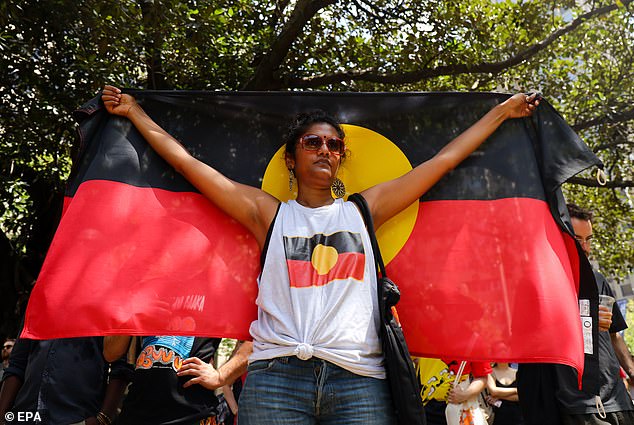- Victoria one step closer to signing Aboriginal treaty
- The First People’s Assembly is ready to negotiate
Victoria is one step closer to becoming the first state to sign a treaty with Indigenous Australians.
Victoria’s First People’s Assembly says it is ready to negotiate a treaty with the state government.
The official notification has been entered into the Treaty Authority’s negotiation database and a copy of the declaration will be presented to the authority at a ceremony on Wednesday.
Assembly co-chair, Gunditjmara man Rueben Berg, said it was the culmination of years of work by a number of Victorian traditional owner groups and the Torres Strait Islander Aboriginal community, to create a shared vision of how the path to treaty should unfold.
The Treaty Negotiation Framework allows traditional owners to form delegations to negotiate treaties that reflect the specific priorities and aspirations of a specific area, while the assembly will negotiate a state treaty for structural reforms.
Under this framework, all parties wishing to enter into treaty negotiations, including the assembly and the government, must demonstrate to the Treaty Authority – the independent arbiter – that they are meeting certain standards.
Assembly co-chair Wamba Wamba, Yorta Yorta, Dja Dja Wurrung and Dhudhuroa woman Ngarra Murray said they would continue to gather feedback from communities across Victoria.
“We are a diverse community here in Victoria, made up of many nations and clans, and we want to make sure everyone is heard,” Murray said.
Victoria is one step closer to becoming the first state to sign a treaty with Aboriginal Australians (pictured, a protester holds the Aboriginal flag at an Invasion Day rally in Sydney)

The Treaty Negotiation Framework allows traditional owners to form delegations to negotiate treaties that reflect specific priorities and aspirations of a specific area, while the assembly will negotiate a state treaty for structural reforms.
“It is an exciting time for Victoria’s First Peoples. We will be sitting down to negotiate Australia’s first treaty.”
Aunt Jill Gallagher, who is not directly involved in the negotiations, revealed in May what kind of compensation she wanted First Nations people to receive.
“I think reparations should be on the table,” he told 3AW.
‘It may not be in the form of money, it may be in the form of empowerment, it may be in the form of land, but definitely not in the form of private land.
“No one is going to lose their private land through this Treaty process.”
His comment came as the Allan government refused to rule out handing over compulsorily acquired private property to indigenous groups.
Treaties and First Peoples Minister Natalie Hutchins was pressed on the issue as she chaired the Public Accounts and Estimates Committee hearing.
“Our goal in the Treaty is to build a new path forward with Aboriginal peoples,” he said.
Ms Gallagher said land “must” be part of reparations and the government should potentially buy land and give it to indigenous organisations.
“It would be amazing if our elected body, the Assembly of First Peoples of Victoria, if the land came on the market we would have the opportunity to buy it,” he said.
Negotiations on a treaty will begin less than a year after Australia rejected Voice in an October referendum.


